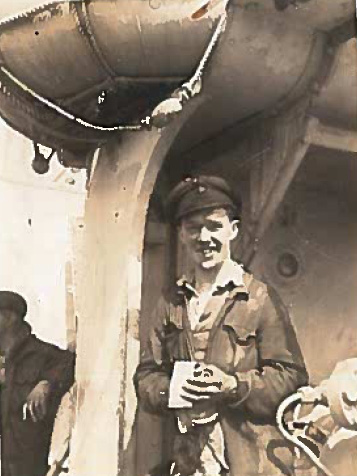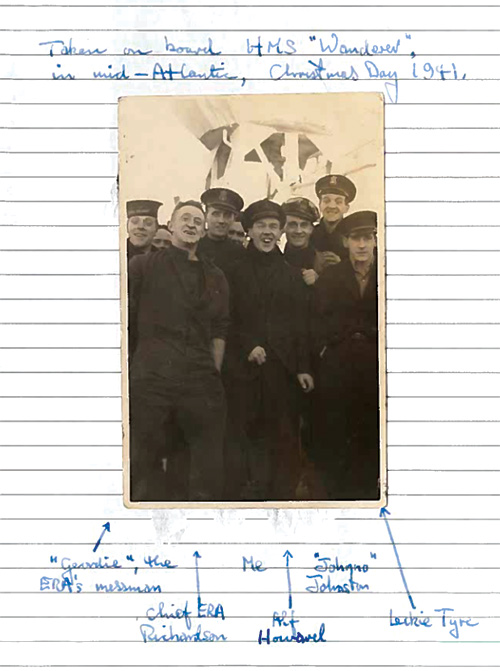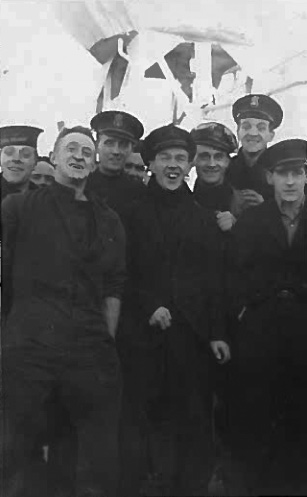This
wonderful article was written first hand by Bill Riseborough, and sent
undated to Vic Green for publication in the Newletter of the V & W
Destroyer Association. Sadly, it was never published and Bill
Riseborough died at Swansea aged 91 in 2014. His son, Bill Riseborough
Jnr, rounds off his father's story at the end and provided the photographs.
William A. Riseborough was born on Friday 13 January 1922 and
attended a Grammar School from 1932-7. He was a talented artist
but:
"My
parents, mainly my mother I think, decided that I should sit the entry
examination for Royal Naval Artificer, a career geared to the sciences
rather than the arts. The Admiralty had, sensing the
imminence of war, decided on an intake of one hundred and eighty
Apprentices so in due course off I went to Chatham Barracks, Kent, on
17th August 1937, to join the Navy. After completing my apprenticeship as a "Tiffy", an Engine Room Artificer, I joined HMS Wanderer in July 1941 when I was nineteen."

 HMS WANDERER
HMS WANDERER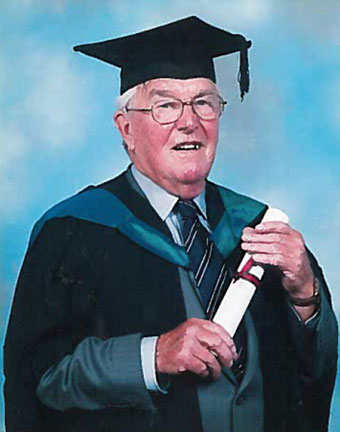
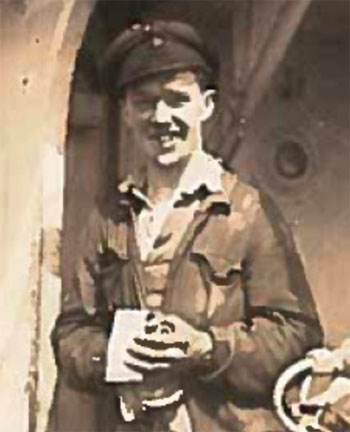 "Their Lordships had no intention of letting us hang around in idleness
in Chatham Barracks and within days I was in the Drill Shed, teeming
with ratings awaiting transport to ships at sea. We ex Artificer
apprentices, now Electrical, Ordnance or Engineroom Artificers, were
drafted according to our surnames, the A`s to G`s going to Battleships
and Aircraft Carriers, H`s to L`s to Cruisers, M`s to P`s
to modern destroyers, with R`s like me getting the more ancient
vessels. The poor S`s onwards picked up the Corvettes and
Sloops.
"Their Lordships had no intention of letting us hang around in idleness
in Chatham Barracks and within days I was in the Drill Shed, teeming
with ratings awaiting transport to ships at sea. We ex Artificer
apprentices, now Electrical, Ordnance or Engineroom Artificers, were
drafted according to our surnames, the A`s to G`s going to Battleships
and Aircraft Carriers, H`s to L`s to Cruisers, M`s to P`s
to modern destroyers, with R`s like me getting the more ancient
vessels. The poor S`s onwards picked up the Corvettes and
Sloops. 